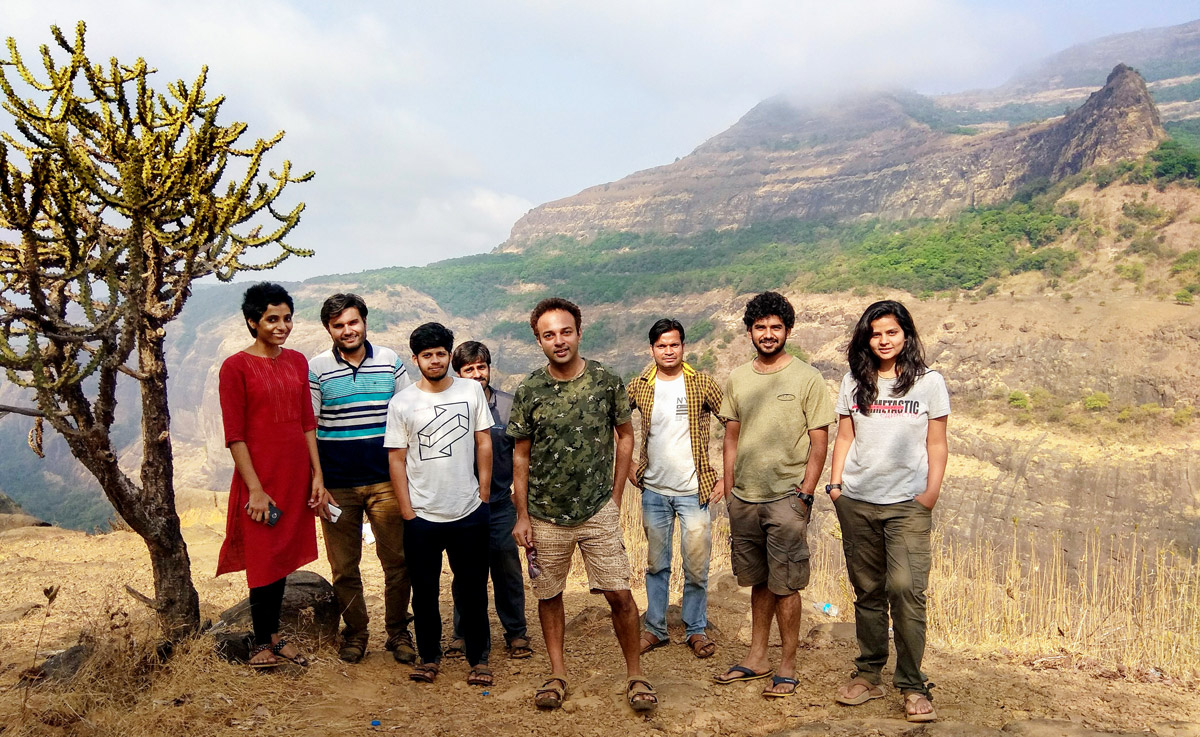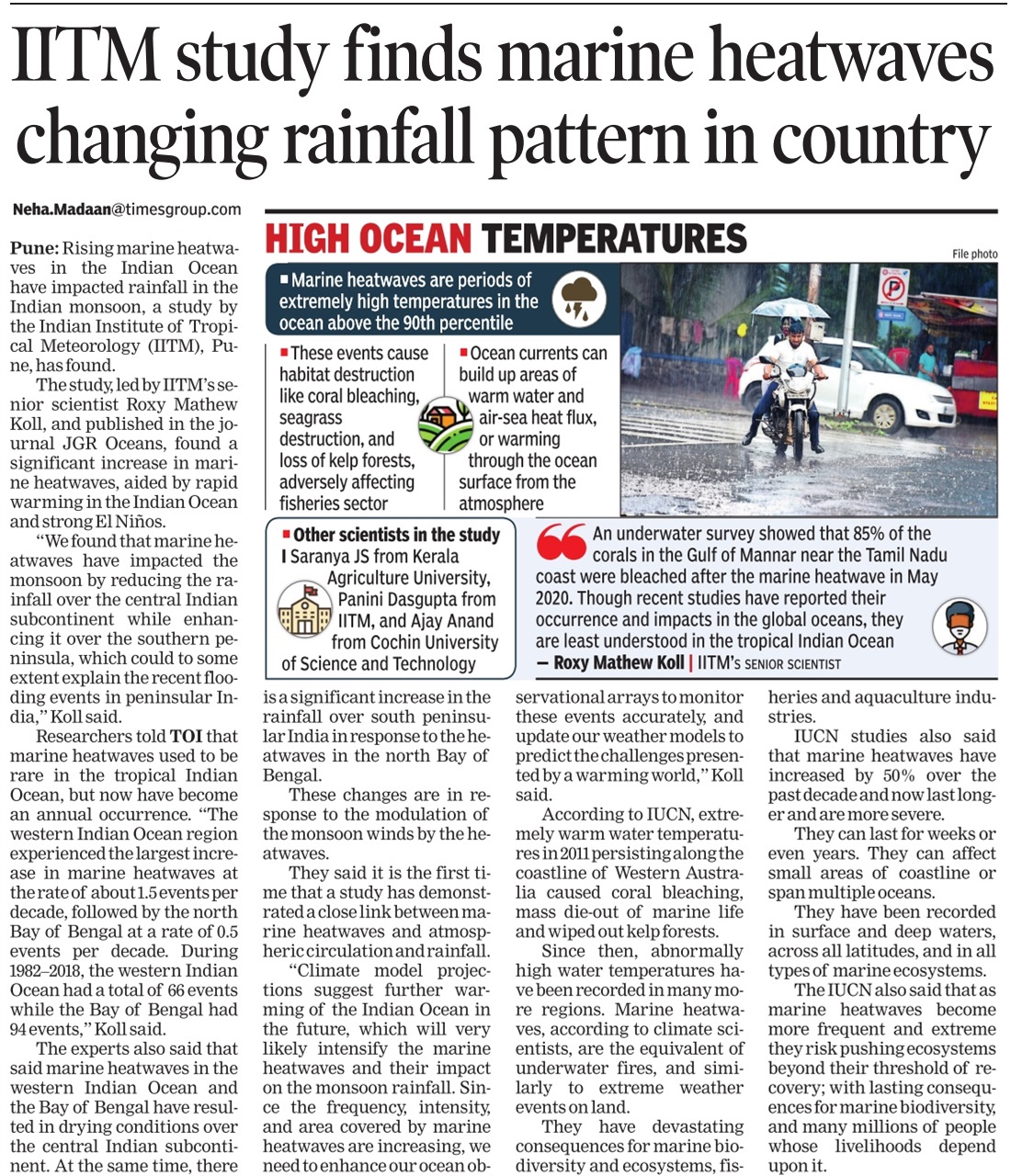The rainfall pattern across the globe is likely changing due to the rapid warming of the Indo-Pacific Ocean, reports a study led by Roxy Mathew Koll of the Indian Institute of Tropical Meteorology (IITM), Pune. In the study published in the journal Nature, the researchers report a twofold expansion of the Indo-Pacific warm pool—the largest expanse of the warmest ocean temperatures on Earth. They find that the expansion of the warm pool has altered the most dominant mode of weather fluctuation originating in the tropics, known as the Madden Julian Oscillation (MJO).
The changes in MJO behavior have increased the rainfall over northern Australia, west Pacific, Amazon basin, southwest Africa and southeast Asia during the winter-spring season (November–April). At the same time, these changes have brought a decline in rainfall over the central Pacific, along the west and east coast of the United States, north India, east Africa, and the Yangtze basin in China.
What is an MJO?
The MJO is characterized by a band of rain clouds moving eastward over the tropics. It generally starts from the Indian Ocean, moves eastward over Southeast Asia to the Pacific and beyond, on a circumglobal tour. Here in the animation below, the green colors show the cloud phase of the MJO and the brown colors show the dry phase of this oscillation.
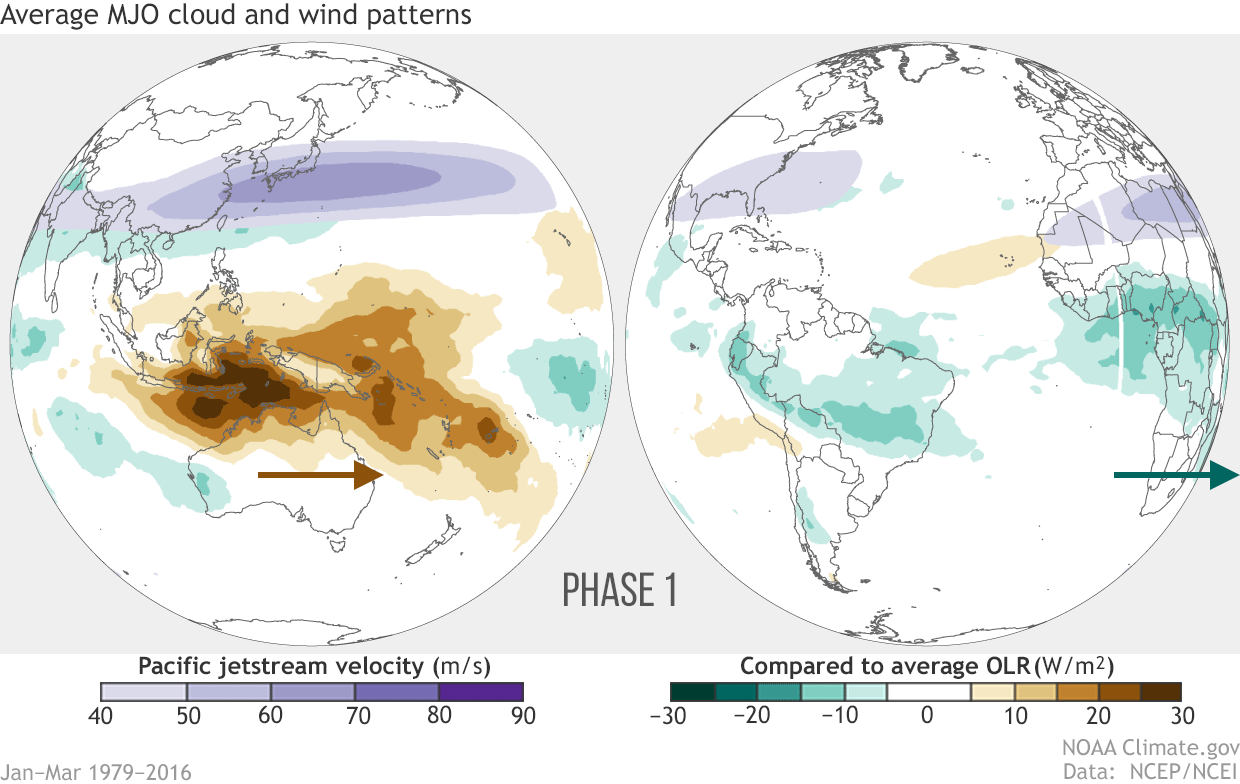
Source: NOAA
Since it circumnavigates the tropics, MJO also regulates the weather on its way. The MJO regulates tropical cyclones, the monsoons, and the El Niño cycle—and occasionally contributes to severe weather events over Asia, Australia, Africa, Europe and the Americas.
Over India/South Asia, MJO can be considered as the winter counterpart of the northward moving monsoon clouds in summer (monsoon intraseasonal oscillation or MISO).
Here is an example of how MJO can travel far beyond the tropics. In the upper atmosphere, there are jet streams (e.g. polar jet streams) that move south towards the tropics. When that happens, and if the MJO is active in that region, the clouds and the moisture gets transported like a river from the Southeast Asian region to the US coast. This atmospheric river is also popularly known as the Pineapple Express. Why Pineapple Express? Because it passes over Hawaii where pineapple is a popular fruit!
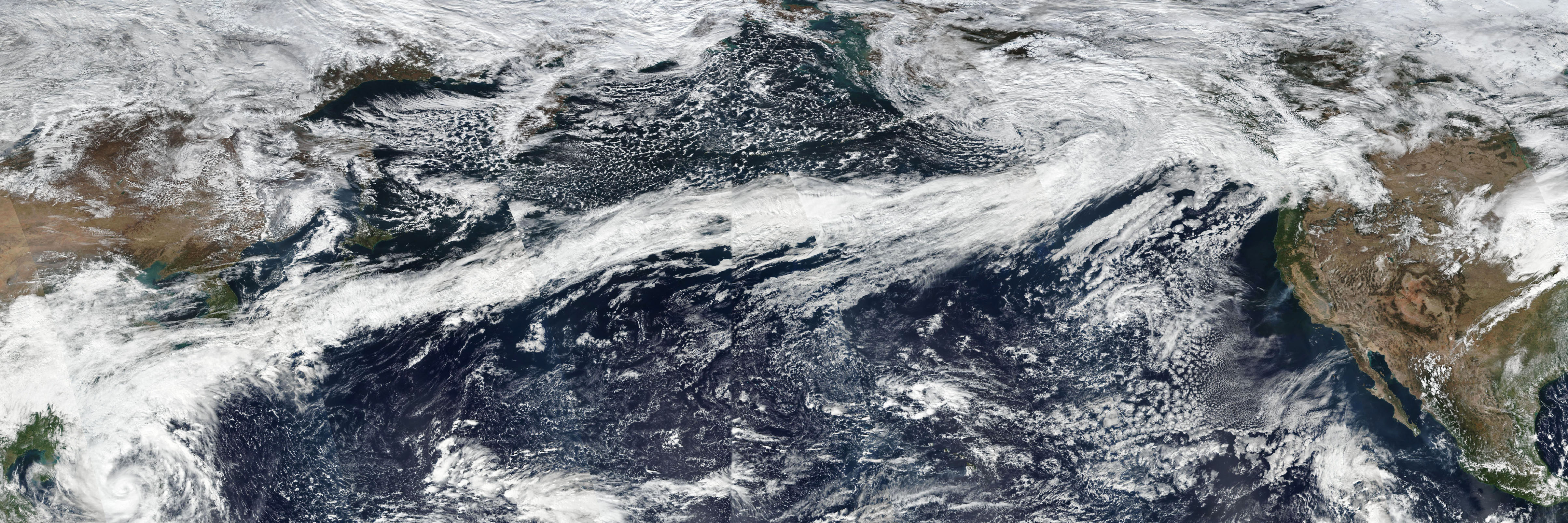
Source: NASA Earth Observatory images
Why is the warm pool important and how has it changed?
The MJO travels a stretch of 12,000–20,000 km over the tropical oceans, mainly over the Indo-Pacific warm pool, which has ocean temperatures generally warmer than 28°C. It is the largest expanse of the warmest ocean temperatures on Earth. Warm waters support intense convective activity, and hence this is also the region with the heaviest rainfall over Earth.
This Indo-Pacific warm pool has been warming rapidly and expanding during the recent decades, largely in response to increased carbon emissions from fossil fuel burning. The warm pool expanded double its size, from an area of 22 million km2 during 1900–1980, to an area of 40 million km2 during 1981–2018. The rate of expansion during 1981–2018 is 400,000 km2, an area equal to the size of California (or Japan or Spain), every year.
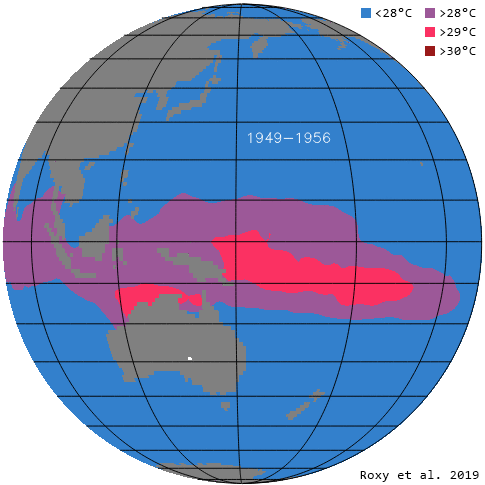
How has the warm pool expansion changed the MJO characteristics?
Though the entire Indo-Pacific has warmed, the warmest waters are over the west Pacific, creating a temperature contrast that drives moisture from the Indian Ocean to the west Pacific Maritime Continent, enhancing the cloud formation there. As a result, the lifecycle of the MJO has changed. The residence time of MJO clouds have shortened over the Indian Ocean by 4 days (from an average of 19 days to 15 days). Over the west Pacific, it increased by 5 days (from an average of 18 days to 23 days). This change in the residence time of MJO clouds has altered the weather patterns across the globe.
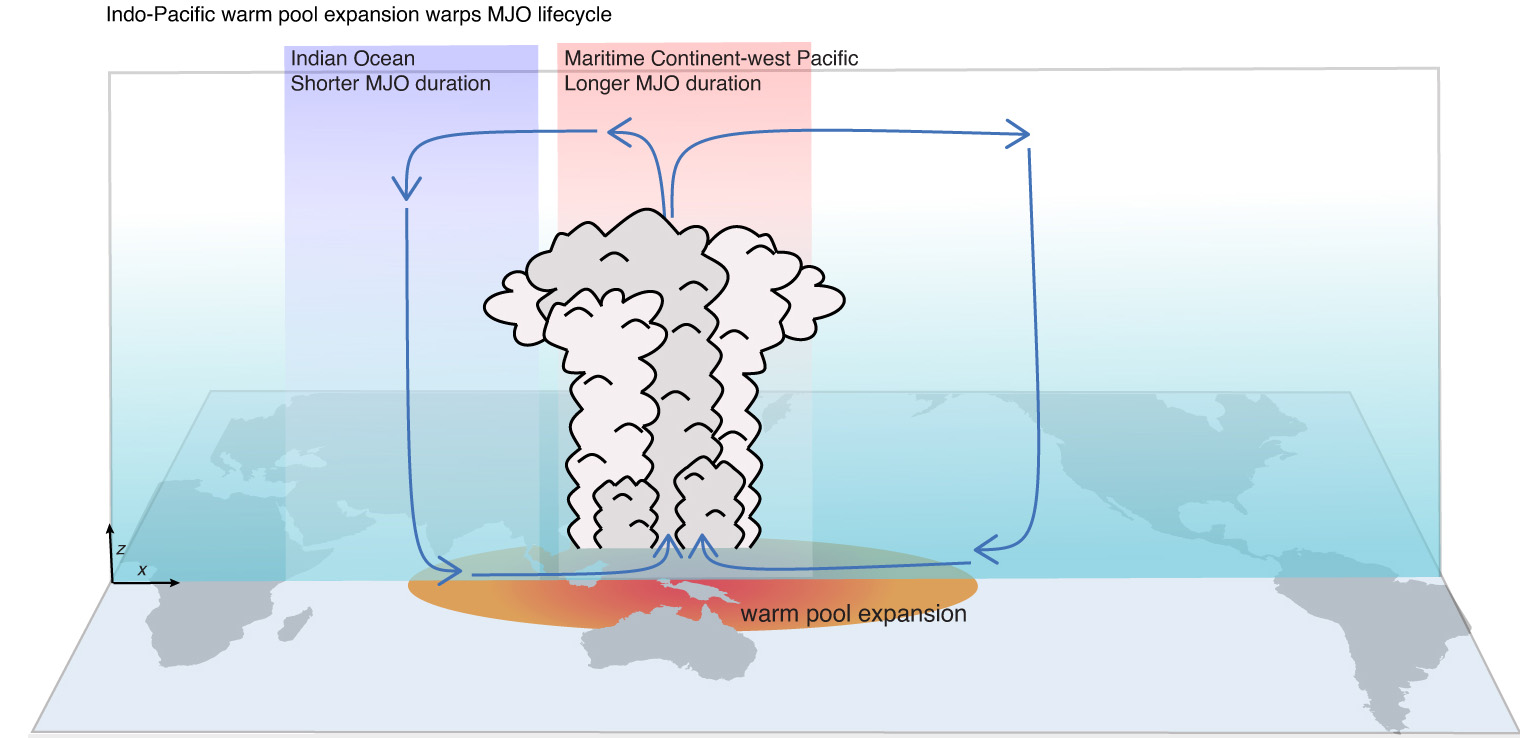
What are the impacts on global rainfall patterns?
The observed changes in MJO here have increased the rainfall over northern Australia, Amazon basin, southwest Africa and southeast Asia (Indonesia, Philippines, Malaysia and Papua New Guinea). Rainfall increase is observed over the Micronesian and Melanesian islands also in the West Pacific. At the same time, these changes have brought a decline in rainfall over the central Pacific, along the west and east coast of the United States (e.g., California, Florida), north India, east Africa, and the Yangtze basin in China. A related reduction in rainfall is also seen over the Polynesian islands south of the equator.
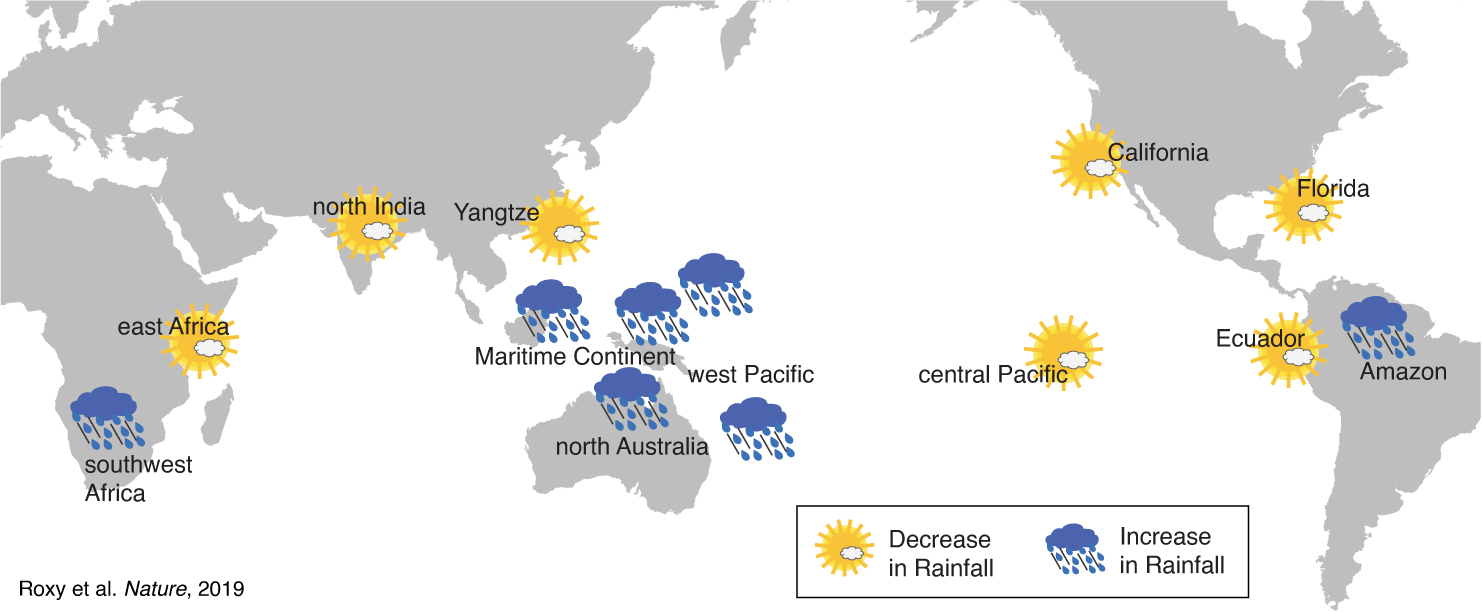
We need to improve our ocean monitoring and better our weather forecasts and have early warning systems in place
Climate model simulations indicate that continued warming of the Indo-Pacific Ocean is highly likely, which may further intensify these changes in global rainfall patterns in the future. This means that we need to enhance our ocean observational arrays to monitor these changes accurately and update our climate models to skillfully predict the challenges presented by a warming world.
There are coordinated international efforts underway to extend the range of accurate weather forecasts out to lead times of two to four weeks and the MJO is one of the most important keys to the success of this enterprise. Our results provide a critical benchmark for determining which computer models to trust for extended range weather forecasting, based on their ability to simulate the observed behavior of the MJO in a changing climate.
Team behind the study
The study is part of an Indo-US collaboration, between the Ministry of Earth Sciences (India) and the U.S. National Oceanic and Atmospheric Administration (NOAA), facilitated by the U.S. National Academy of Sciences. Roxy Koll conducted the research in collaboration with other scientists—Panini Dasgupta (IITM), Michael McPhaden and Chidong Zhang (NOAA), Deahyun Kim (University of Washington) and Tamaki Suematsu (University of Tokyo).
Media Highlights: The study received huge attention in the media, with many newspapers covering it as front-page headlines. See our media section for details.
Reference: Roxy M. K., Panini Dasgupta, Michael J. McPhaden, Tamaki Suematsu, Chidong Zhang and Daehyun Kim, 2019, Twofold expansion of the Indo-Pacific warm pool warps the MJO lifecycle, Nature, 575, 647–651. doi: 10.1038/s41586-019-1764-4 [pdf].

Roxy Mathew Koll and Panini Dasgupta

